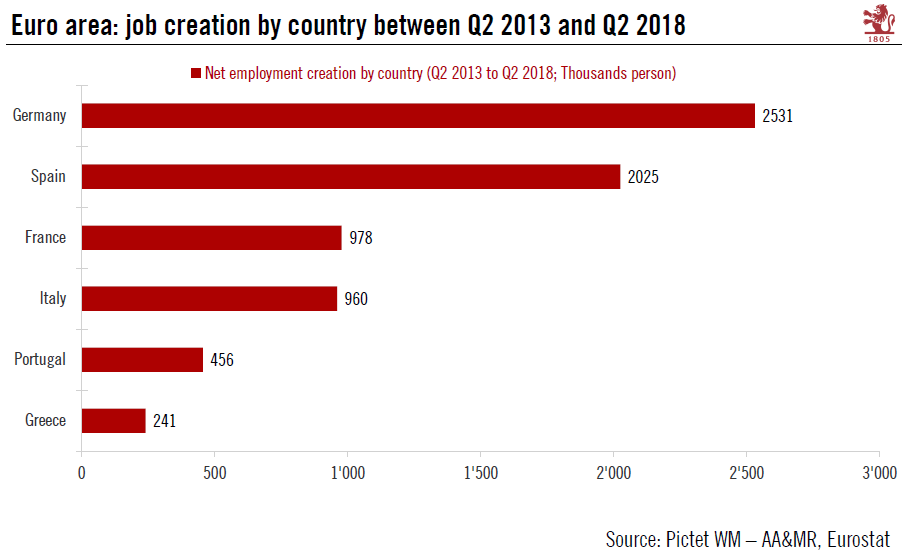But there is room for further improvement. This week euro area employment data confirmed that labour market recovery remains on track. Employment grew at 0.4% q-o-q in Q2 2018, marking the 20th consecutive quarter of expansion. Employment is now 2.4% above its pre-crisis (2008) level. Since Q2 2013, 9.2 million jobs have been created in the euro area. One development of note is that employment growth has been broad, including many countries that were hard hit by the crisis. Spain and Germany have contributed to approximately 50% of the total increase in euro area employment. Employment is a lagging indicator. Nevertheless, leading indicators such as the employment component in the Markit PMI surveys suggest that
Topics:
Nadia Gharbi considers the following as important: 2) Swiss and European Macro, euro area domestic demand, Euro area employment, euro area labour market, Featured, Macroview, newsletter, Pictet Macro Analysis
This could be interesting, too:
Michael Njoku writes Totalitarianism Begins With A Denial of Economics
Nachrichten Ticker - www.finanzen.ch writes US-Wahl treibt Bitcoin über 90’000 US-Dollar – wie Anleger vom neuen Krypto-Hype profitieren können
Jim Fedako writes Subjectivity and Demonstrated Preference: A Possible Paradox
Mises Institute writes Spring 2025 Virtual Mises Book Club
|
But there is room for further improvement. This week euro area employment data confirmed that labour market recovery remains on track. Employment grew at 0.4% q-o-q in Q2 2018, marking the 20th consecutive quarter of expansion. Employment is now 2.4% above its pre-crisis (2008) level. Since Q2 2013, 9.2 million jobs have been created in the euro area. One development of note is that employment growth has been broad, including many countries that were hard hit by the crisis. Spain and Germany have contributed to approximately 50% of the total increase in euro area employment. Employment is a lagging indicator. Nevertheless, leading indicators such as the employment component in the Markit PMI surveys suggest that despite the euro area growth slowdown in the first half of the year, job creation will continue in the coming months, albeit at a slightly slower pace. Importantly, labour market strength is also increasingly translating into a rising wage stimulus. The three main euro area labour cost indicators – negotiated wages, compensation per employee and hourly labour costs are moving up. Labour market improvement and rising wages are the main drivers of private consumption and likely to continue in the coming months. Moreover, accommodative financing conditions add further support to investment. As a result, the strength in domestic demand is expected to mitigate the downside risks from external weakness. |
Euro area: Job creation by country between Q2 2013 - Q2 2018 |
Tags: euro area domestic demand,Euro area employment,euro area labour market,Featured,Macroview,newsletter

